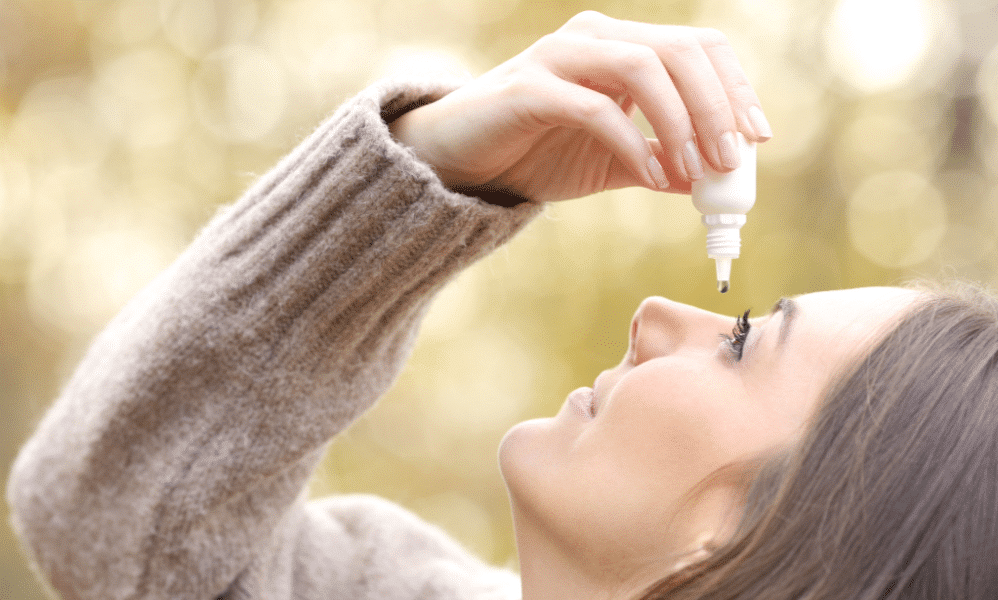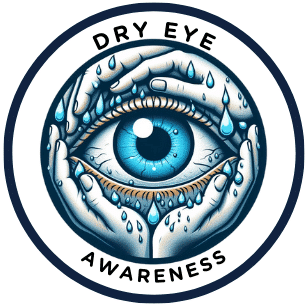
Dry eye syndrome is a common condition. It is often characterized by a scratchy sensation, redness, or even watery eyes that counterintuitively indicates a lack of proper lubrication. Many people experience it, and it mainly affects adults as they age, with a pronounced tendency in postmenopausal women.
The tear film plays a crucial role here. It’s a thin layer of moisture that keeps the eyes comfortable, clean, and clear. A disruption in this film’s delicate balance can lead to dry eye symptoms. Now, while various factors contribute to this condition, it’s becoming clear that environmental elements substantially impact its prevalence.
Understanding the environmental factors that contribute to dry eye syndrome is vital. It empowers us to take proactive steps toward minimizing their effects, thus potentially reducing the discomfort and complications associated with dry eye. I’ll guide you through what to watch out for indoors, such as air quality and humidity, which seamlessly leads us to our next point of discussion: the specific indoor triggers that could be exacerbating your symptoms.
Indoor Environmental Triggers of Dry Eye Syndrome
Consider your indoor environment if your eyes often feel like a desert. The spaces where you spend most of your time could contribute to discomfort. Central heating and air conditioning are the usual suspects when reducing indoor humidity levels, potentially leading to dry eyes.
Now, about that screen, you’re probably reading this on. It’s not just about the digital blue light. Staring at screens for extended periods can decrease how often you blink, contributing to the evaporation of your tear film. It’s a simple equation: less blinking equals less moisture.
Add smoke from tobacco products, cooking, and even your fireplace to the equation. These irritants can compromise your tear film’s integrity, leading to a sensation comparable to rubbing your eye with sandpaper. Well, almost.
But it’s not all doom and gloom. You have the power to alter your indoor environment. Making changes, such as using a humidifier to add moisture back into the air or taking regular breaks from screens to refresh your blink rate, can significantly impact your eye comfort.
Before moving on to the great outdoors and how it affects your eyes, understand that combating dry eye syndrome starts at home, with the air you breathe and your habits. You’re laying the foundation for healthier eyes by taking control of your indoor space.
Outdoor Environmental Influences on Dry Eye Incidence
Stepping outside, the eyes are directly exposed to a world full of elements that can induce dry eye symptoms. As someone who’s managed dry eye for years, I’ve learned to recognize the not-so-obvious culprits lurking in the outdoor environment.

Take wind, for instance. A windy day doesn’t just mess up your hair; it’s a force that can evaporate your tear film faster than you can say, ‘Where are my sunglasses?’ It’s unsurprising that people often experience a gritty, burning sensation in their eyes after a day outside in blustery conditions. Windy environments are a significant factor in evaporative dry eye, one of the main types of this condition.

And then there’s dust. We encounter it constantly, from pollen to pollution particles. These tiny invaders can irritate the eyes and lead to dry eye symptoms, disrupting the natural composition of your tears. They may seem small and insignificant, but trust me, they significantly impact the comfort of your eyes over time.
While UV rays are well known for their skin damage potential, they also pose a risk to eye health. Exposure to UV light may damage the eye’s surface cells over time, intensifying dry eye symptoms. Wearing UV-protective sunglasses isn’t just about style; it’s a shield for the well-being of your eyes.

Now, let’s talk about air quality. Whether car exhaust in a crowded city or smoke from a distant wildfire, pollution is a severe stressor for our eyes. Studies show a direct link between poor air quality and increased dry eye cases. The eyes are sensitive to these changes, and it’s not something to ignore. So, what can someone afflicted with this condition do beyond staying indoors?
Wearing wraparound glasses can protect against wind and dust while sealing in humidity around the eyes. Using preservative-free artificial tears before stepping outside can provide an extra layer of protection. Attention to local air quality reports and limiting exposure during high pollution levels is also wise.
Mitigating Environmental Risks and Managing Dry Eye
Dry Eye Syndrome can be a persistent nuisance. Still, it’s often manageable through professional care and personal vigilance. A visit to your eye care professional is my first recommendation; they can offer tailored advice and, if necessary, medical treatments that provide relief.
Next, let’s move to personal habits. Focusing on blinking regularly, especially while using devices, helps maintain healthy tear film. I also encourage using artificial tears if suggested by your doctor. It’s a simple addition to your routine that can offer significant comfort.

Making adjustments to your home environment can make a big difference, too. A humidifier can add needed moisture to your indoor air, and air purifiers can reduce the presence of irritants. Something as simple as positioning your desk away from direct airflow from heating or cooling systems can alleviate symptoms.
Finally, if your eyes consistently bother you or affect your quality of life, CONTACT YOUR EYE CARE PROVIDER. Remember, minimizing environmental impact on your eyes soothes discomfort and contributes to long-term ocular health.
